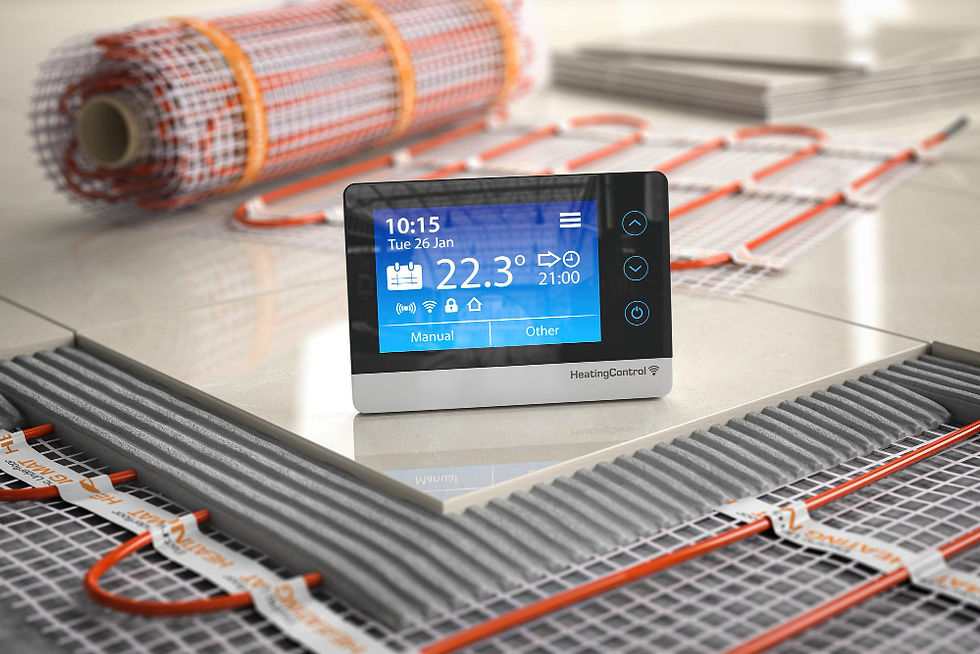Eco-Friendly Home Extensions and Loft Conversions: Sustainable Choices for UK Homeowners
- Builder Expert
- Jul 1, 2024
- 4 min read
As awareness of environmental issues grows, more UK homeowners are considering eco-friendly options for their home extensions and loft conversions. By using sustainable materials and energy-efficient designs, homeowners can reduce their carbon footprint, lower energy bills, and create healthier living spaces. This article explores sustainable materials and building practices, discusses the benefits of energy-efficient designs, and highlights successful case studies of green extensions and loft conversions.
Sustainable Materials and Eco-Friendly Building Practices
1. Sustainable Materials
Using sustainable materials is one of the key aspects of eco-friendly building. Here are some popular choices:
Reclaimed Wood: Using reclaimed wood for flooring, beams, and furniture reduces the demand for new timber and gives old wood a second life.
Bamboo: This fast-growing, renewable resource is ideal for flooring and cabinetry due to its strength and durability.
Recycled Metal: Incorporating recycled steel and aluminium can reduce the environmental impact of mining and refining new metals.
Hempcrete: A mixture of hemp fibres, lime, and water, hempcrete is a lightweight, breathable, and thermally efficient building material.
Recycled Glass: Used in countertops and tiles, recycled glass can add a unique aesthetic while reducing landfill waste.

2. Eco-Friendly Building Practices
Adopting eco-friendly building practices is essential for sustainable home improvements:
Local Sourcing: Using locally sourced materials reduces transportation emissions and supports local economies.
Low-VOC Paints and Finishes: Volatile organic compounds (VOCs) can be harmful to indoor air quality. Low-VOC paints and finishes are safer for both the environment and inhabitants.
Modular Construction: Prefabricated modules can be constructed off-site and assembled on-site, reducing waste and improving efficiency.
Green Roofs: Installing a green roof with vegetation can improve insulation, reduce rainwater runoff, and provide habitat for wildlife.
Benefits of Energy-Efficient Designs
Incorporating energy-efficient designs into home extensions and loft conversions offers numerous benefits, including reduced energy consumption, lower utility bills, and a smaller environmental footprint.
1. Improved Insulation
Proper insulation is critical for energy efficiency. High-quality insulation materials, such as sheep’s wool, cellulose, or rigid foam, can significantly reduce heat loss in winter and keep the home cooler in summer. Insulating walls, roofs, and floors helps maintain a comfortable indoor temperature and reduces the need for heating and cooling systems.
2. Energy-Efficient Windows
Installing double or triple-glazed windows with low-emissivity (low-E) coatings can minimise heat transfer and improve energy efficiency. These windows also help reduce noise pollution and enhance security.

3. Renewable Energy Sources
Integrating renewable energy sources into your home can further enhance sustainability:
Solar Panels: Photovoltaic (PV) panels can be installed on the roof to generate electricity from sunlight. Solar thermal panels can also be used to heat water.
Heat Pumps: Air-source or ground-source heat pumps provide an efficient way to heat and cool your home by transferring heat between the inside and outside.
Wind Turbines: In suitable locations, small wind turbines can generate electricity for residential use.
4. Water Conservation
Eco-friendly extensions and loft conversions can incorporate water-saving technologies:
Rainwater Harvesting: Collecting and storing rainwater for use in toilets, washing machines, and garden irrigation can reduce water consumption.
Low-Flow Fixtures: Installing low-flow taps, showerheads, and toilets can significantly reduce water usage without compromising performance.

Successful Case Studies of Green Extensions and Loft Conversions
1. The Eco Loft Conversion in London
A family in North London converted their loft into an eco-friendly bedroom and bathroom. Sustainable features included:
Insulation: They used recycled denim insulation, which provides excellent thermal performance and is made from post-consumer waste.
Natural Lighting: Skylights and large windows maximised natural light, reducing the need for artificial lighting.
Solar Panels: Roof-mounted solar panels supplied electricity and hot water, significantly reducing energy bills.
Outcome: The project resulted in a comfortable, energy-efficient living space with reduced carbon emissions and lower utility costs. The home's market value also increased due to its eco-friendly features.
2. The Green Extension in Bristol
A couple in Bristol extended their Victorian terrace house using sustainable materials and practices. Key features included:
Reclaimed Materials: Reclaimed bricks and timber were used to match the existing structure and reduce the environmental impact.
Green Roof: A sedum green roof improved insulation, enhanced biodiversity, and reduced rainwater runoff.
Passive Solar Design: Large south-facing windows captured solar energy, providing natural warmth and light.
Outcome: The extension blended seamlessly with the original house while providing additional space. The green roof and passive solar design reduced energy consumption and created a healthier living environment.
3. The Sustainable Home Office in Edinburgh
With the rise of remote working, a homeowner in Edinburgh added a garden office using eco-friendly methods. Key features included:
Sustainable Timber: FSC-certified timber was used for the structure, ensuring responsible forest management.
Energy-Efficient Heating: An air-source heat pump provided heating and cooling, powered by electricity from rooftop solar panels.
Rainwater Harvesting: A rainwater collection system supplied water for the office’s bathroom and garden irrigation.
Outcome: The home office offered a comfortable, sustainable workspace that reduced commuting and associated emissions. The energy-efficient systems and renewable energy sources resulted in low operating costs.
Conclusion
Eco-friendly home extensions and loft conversions are not only beneficial for the environment but also offer significant financial and health benefits. By using sustainable materials, adopting energy-efficient designs, and incorporating renewable energy sources, UK homeowners can create beautiful, functional, and environmentally responsible living spaces. Successful projects, such as those highlighted in the case studies, demonstrate the potential of green building practices to enhance property value, reduce energy costs, and promote a sustainable lifestyle. As the demand for eco-friendly homes continues to grow, investing in sustainable home improvements is a smart choice for both current and future homeowners.




Comments